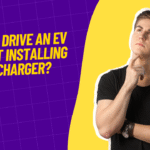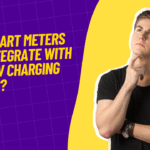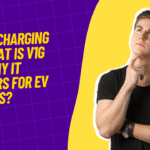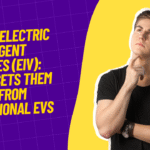Electric vehicles (EVs) often carry bold range claims from manufacturers—like “500 km ARAI range”—but experienced owners know actual mileage in real-world conditions is usually lower. Whether you’re shopping for your first EV or evaluating a long-distance model, understanding the difference between claimed and actual range is essential for realistic planning and ownership satisfaction.
In this comprehensive guide, we’ll explore how automakers derive their range figures, why real-world range varies, how you can calculate your own everyday range, and tips for optimizing performance—so you can decode range metrics with confidence.
2. How Manufacturers Determine Range?
EV range is measured using standardized test cycles under controlled conditions. In India, most follow the ARAI (Automotive Research Association of India) test cycle; internationally, the WLTP or EPA protocols are used.
- Test Conditions Include:
- Moderate temperature (20–25 °C)
- Flat surface
- Constant moderate speed
- No accessory usage (A/C/heating)
- Fully charged at start, discharge until minimum level
These cycles produce optimistic figures—helpful for comparisons, but not a reflection of daily usage.
3. Why Real-World Range Differs?
3.1 Driving Style
Aggressive acceleration and frequent high-speed driving significantly increase energy use.
3.2 Terrain and Environment
Hilly landscapes, stop-and-go traffic, or varying temperatures all stress battery efficiency.
3.3 Weather Conditions
Heat and cold reduce range by 10–30%. Climate control use amplifies this difference.
3.4 Speed
The energy cost varies with the square of speed—highways consume more than urban drives.
3.5 Accessories and Load
A/C, lights, infotainment, extra passengers, and cargo all affect battery draw.
3.6 Software and Battery Aging
Battery State of Health (SoH), firmware version, and thermal control efficiency impact usable capacity.
4. Real-Life Examples: Range Gaps
| Model | ARAI / WLTP Range | Real-World Range |
|---|---|---|
| Tata Nexon EV Max | 380 km | 300 km |
| MG ZS EV | 450 km | 350 km |
| Hyundai Kona Electric | 452 km | 340–360 km |
| Alta Motors Ather 450X | 150 km | 115–125 km |
| Ola S1 Pro | 150 km | 115–130 km |
Expect 15–25% drop depending on your daily conditions.
5. Decoding the Discrepancy
5.1 Start with Manufacturer Figures
Know your model’s ARAI/WLTP range as a baseline.
5.2 Identify Driving Profile
Estimate your mix of city, highway, AC use, load, and driving style.
5.3 Calculate Expected Range
- City driving (mild): 80–85% of ARAI range.
- Mixed driving (A/C): 70–80%.
- Highway (100 km/h+): 60–70%.
- Cold (≤ 10 °C): 55–65%.
- Up to 5-year degradation: subtract another 5–10%.
Example: Nexon EV Max rated 380 km:
Mixed driving AC = 75% → 285 km real range.
5.4 Measure Yourself
Keep logs of full charge-to-drain range for an accurate personal gauge.
6. Estimating Your Range: A Calculation Template
- Choose ARAI figure.
- Adjust for driving mix:
- City = -10%
- Highway = -20%
- Subtract accessory and load penalty (-5–10%).
- Factor in temperature: cold (-15%), hot (-10%).
- Include battery degradation after 2+ years (-5%).
Sample Calculation for MG ZS EV (450 km). Mixed + AC + 50 km highway + AC usage load/cargo + summer + 10% degradation → 450 x 0.75 x 0.95 x 0.90 x 0.90 = ~257 km.
7. Testing Your EV Range
7.1 Full Charge-to-Empty Test
Charge to 100%, drive till ~10%, record distance—ideal for baseline measurement.
7.2 Daily Diary
Track energy consumption per km over a week for consistent RKM/kgW data.
7.3 Use Efficiency Mode
Some EVs feature ECO/City mode—compare energy metrics across modes.
7.4 Smart Integrations
Use onboard apps or third-party tools (PlugShare, EVTrip Planner) to analyze usage trends.
8. Extending Real-World Range
- Drive smoothly: use regen & gradual acceleration.
- Moderate speed: stick to 80–90 km/h on highways.
- Limit extreme temperatures: pre-cool or warm cabin in mild weather.
- Off-peak charging helps battery health and efficiency.
- Reduce weight and roof drag.
- Maintain optimal tire pressure and alignment yearly.
9. Long-Distance Planning
- Plan segments ≤ battery range – 20% buffer (R – 20%)
- Identify fast-charging spots (25–50 kW DC) along route.
- Monitor SoC carefully; 80% charge is efficient and safer for battery health.
- Account for elevation changes and weather in range planning.
10. Frequently Asked Questions (FAQ)
Q1. Why is my EV’s real-life range so much lower than claimed?
Climate, terrain, speed, accessories, driving style, and battery age collectively reduce range often by 15–30%.
Q2. Can I improve it by charging slower?
AC charging itself doesn’t increase range—steady, smooth regeneration, and moderate use improve efficiency over time.
Q3. How often should I do a full charge-to-zero test?
Every 30–45 days to confirm battery health and personal range standards without stressing the battery.
Q4. Does range regen matter?
Absolutely—smooth momentum recapture in regen mode can boost range by 5–10%, especially in city traffic.
Q5. Should I rely on confirmed route planning?
Yes—EV apps display live charger status, range estimates, and even elevation along your route to avoid range anxiety.
Q6. Can hot temperatures improve EV range?
No—heat makes battery less efficient and heat-vs-cool loads decrease range; moderate temps are ideal.
11. Conclusion: Realism Fuels Reliability
Understanding the gap between range claims and reality allows smarter EV use and planning. By exploring driving style, environment, battery health, and charging habits, you’ll learn how your real-world range shapes up. Regular checks and driving adjustments ensure you get the most out of your EV ownership—confidently, reliably, and sustainably.










